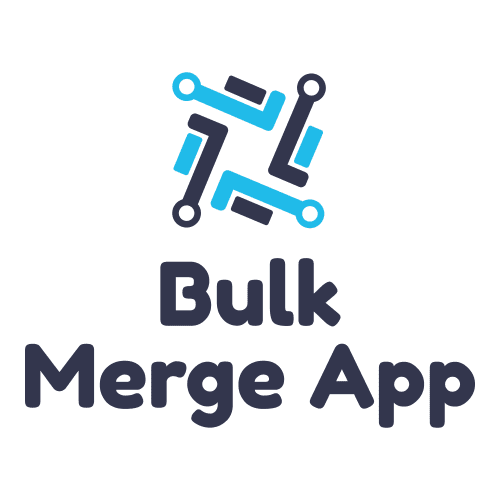Strategies for a Successful Salesforce Adoption in Your Business

Salesforce is used by more than 150,000 companies and bills itself as the world’s #1 customer relationship management (CRM) platform. Active users see gains in sales productivity, customer relationships, and business outcomes using the software’s deep feature sets and tools to help grow their business.
However, Salesforce is also complex, and it takes comprehensive adoption strategies to customize the platform to your unique business needs.
What Does a Successful Salesforce Adoption Look Like?
A successful Salesforce adoption provides significant benefits for sales managers and sales reps, including:
- A centralized platform for customer data and interaction history
- Lead management
- An easy way to manage and track deal progress
- Tools for forecasting and tracking productivity
- Setup and automation of configure, price, and quote (CPQ)
- Embedded dashboards for business intelligence and insights
Unfortunately, some companies spend money on Salesforce but never realize the benefits. Some fail because they did not optimize the implementation process or leverage the automation opportunities of the sales cloud platform. Others fail to create the right user experience, build a simplified user interface, or simply allow poor user adoption rates.
Planning a successful transition to Salesforce is key to optimizing usage and experiencing the benefits to the fullest.
Salesforce Adoption Strategies to Ensure Success
Here are seven of our top Salesforce adoption tips for successful implementation of the platform for your business.
1. Receive and Demonstrate Buy-In from Leadership
Any major digital transformation requires leadership buy-in from the top of the organization. Employees need to know that the leadership team supports the project. Transformation isn’t only about the technology, but the business processes and systems that use the technology to drive them. Without a commitment from top managers to utilize and build systems around the platform, even the best implementation can fall short.
McKinsey research shows that when those driving the transformation and the senior leaders of the organization are more involved, the likelihood of success improves significantly.
2. Invest in Quality Training Content
Salesforce reports that 98% of its customers meet or exceed their goals for return on investment. So, there’s great value in helping your users to embrace and utilize the platform. However, like any other sophisticated business and marketing tool, there is a learning curve. A robust training program will provide a clear understanding of operations and instill confidence in your employees regarding how to use this system.
You can have a great user interface, but if you do not invest in quality training, your business will likely suffer from poor user adoption in Salesforce.
3. Highlight and Reward Power Users
Even with management buy-in, employees often take their cues from their colleagues. During a digital transformation, it helps to identify your power users and advocates and use them to help get buy-in from the rest of the group.
When you reward power users, you demonstrate to your team that you value the way they embrace Salesforce. You can also have power users assist in the training and demonstrate the benefits so it’s not always management-driven.
4. Streamline the Implementation Process with Custom Solutions and Integrations
Getting maximum ROI from Salesforce requires organizations to customize it to integrate with their existing tech stack. The platform is built for deep customization and you can easily implement some features yourself.
However, some aspects of customization and integration can be extremely complex. For these more detailed processes, you’ll save time and money using certified Salesforce implementation experts to help streamline your workflows, approvals, and automation for a seamless user experience.
With the right tools and expertise, Salesforce can be streamlined in a variety of ways, including:
- Look and feel of the user interface and page layouts to match your workflow
- Functionality, including custom objects, fields, and templates
- Integrations with other third-party platforms and legacy software programs
- Custom dashboards and reports
- Custom email templates and triggers for lead nurturing
A Salesforce Health Check Assessment can also help find hidden bottlenecks and uncover issues.
5. Keep Your Data Clean and High-Quality to Limit Frustration
It can be frustrating for sales reps when the data is inaccurate or incomplete. This can create extra work just to figure out if the information is right. It can also render the information ineffective. For example, if you have the wrong name or contact, your email campaigns may never be seen by the right person.
To ensure accurate data, you must also have strong governance policies in place about collecting, validating, and cleansing your data.
Best practices for data cleansing include:
- Ensuring accurate input following validation rules
- Automating data entry and sync wherever possible
- Identifying and merging duplicate data
- Eliminating data silos to create a single source of truth
- Removing extra fields that you won’t use
- Auditing data periodically for inaccuracies
6. Form User Committees to Regularly Meet and Discuss Feedback
After you have implemented Salesforce, it’s also a good idea to request feedback from the users. With experience, they will see where improvements can be made or where processes could be streamlined. Feedback is crucial to help you continue to improve efficiency, alleviate user frustration, and identify a roadmap for future development.
7. Track Key Adoption Metrics for Actionable Insights
If you believe that Salesforce will positively impact your organization, then maximizing adoption is critical. Tracking adoption rates to find areas where team members aren’t leveraging the platform will help with implementation.
This is especially important in the early stages to get the marketing and sales teams to embrace Salesforce and build good habits. Tracking specific feature adoption will also help ensure users are capitalizing on the potential of this platform.
Key metrics to establish include adoption rate, user frequency, and consistency.
Hire Salesforce Experts to Help Shape Your Adoption Strategy Today
Salesforce is one of the most powerful customer relationship management platforms you can use. However, it’s only as effective as your data, business processes, and user adoption.
A certified Salesforce partner will help you manage, organize, and implement your Salesforce adoption strategy.
Astreca delivers customized implementation and migration services to optimize Salesforce, managed services, and consulting to help you reach your business goals. Contact Astreca today and let us help you optimize your Salesforce adoption strategy.
#BusinessProductivity #BusinessTransformation #ChangeManagement #CRMStrategy #SalesforceAdoption #UserEngagement #UserTraining






